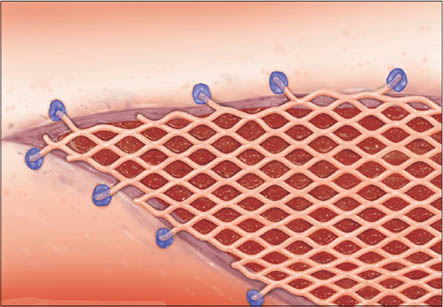Skin Grafting
Introduction
Skin grafting is a surgical procedure in which skin or a skin substitute is placed over skin lesion such as a burn or non-healing wound. A skin graft is aimed for permanently replacing damaged or missing skin. It can also provide a temporary wound covering.
The skin is the largest organ in human body. The skin is also known as the integument as it covers the entire body from outside. It protects the body from fluid loss, helps in maintaining body temperature, and also prevents disease-causing bacteria or viruses from entering the body. If the skin is damaged extensively by burns or non-healing wounds, this can compromise the health and well-being of the patient.
The skin consists of two main layers: the outer layer, called as epidermis, which lies on and is nourished by the underlying thicker dermis. These two layers are approximately 1–2 mm thick. The epidermis also consists of two layers. An outer layer is of dead cells called keratinocytes, which provide a tough protective coating. There are several layers of rapidly dividing cells just beneath the keratinocytes. The dermis is thicker containing blood vessels, nerves, sweat glands, hair follicles, and oil glands. The dermis consists mainly of connective tissue largely made up of a protein called as collagen. Collagen has a function of giving flexibility to the skin and it also provides structural support. The fibroblasts that make collagen are the most abundant cell types in the dermis.
Skin grafting is a type of graft surgery involving the transplantation of skin

Skin varies in thickness in different parts of the body. It is thickest on the palms and soles of the feet, and thinnest on the eyelids. Usually, men have thicker skin than women, and adults have thicker skin than children. After age 50, the skin begins to grow thinner again as it loses its elastic fibers and some fluid content.
Types of skin grafts
The term graft commonly refers to either an allograft or an autograft. Skin grafts can be harvested very thin or in several layers from another area of the patient’s own body in autograft. This graft is preferred when there is enough undamaged skin available and the patient is healthy enough to undergo the additional surgery required. An allograft means skin tissue is obtained from another human being. Donor skin is available as a frozen, stored form harvested from cadavers. Skin taken from an animal (usually a pig) is called as xenograft because it comes from a nonhuman species. Allografts and xenografts are rejected by the patient’s immune system within seven days; therefore these are just used to provide temporary covering. They must then be replaced with an autograft.
Post surgical care
Skin varies in thickness in different parts of the body. It is thickest on the palms and soles of the feet, and thinnest on the eyelids.
After putting a skin graft in place, it must be maintained carefully even after it has healed. Patients who have grafts on their legs are advised to remain in bed for seven to 10 days with leg elevation. The patient needs to support the graft with a special bandage or stocking. Grafts on other areas of the body should be similarly supported after healing. The support decreases the amount of contracture of the graft.
Grafted skin does not contain sweat or oil glands. Therefore, it should be lubricated daily for two to three months with mineral oil or another bland oil to prevent drying and cracking.
The risks of skin grafting include:
1. Risks of any type of anesthesia. These include reactions to the medications and breathing problems.
2. Risks of any surgery such as bleeding and infection.
3. The risks involved in an allograft procedure, especially transmission of an infectious disease from the donor.
4. Infection of the graft tissue because of inefficient sterilization
5. Failure of the graft due to improper preparation of the wound, poor blood flow to the injured area, swelling, or infection.
6. The most common reason for graft failure is the formation of a hematoma, or collection of blood in the injured tissues.